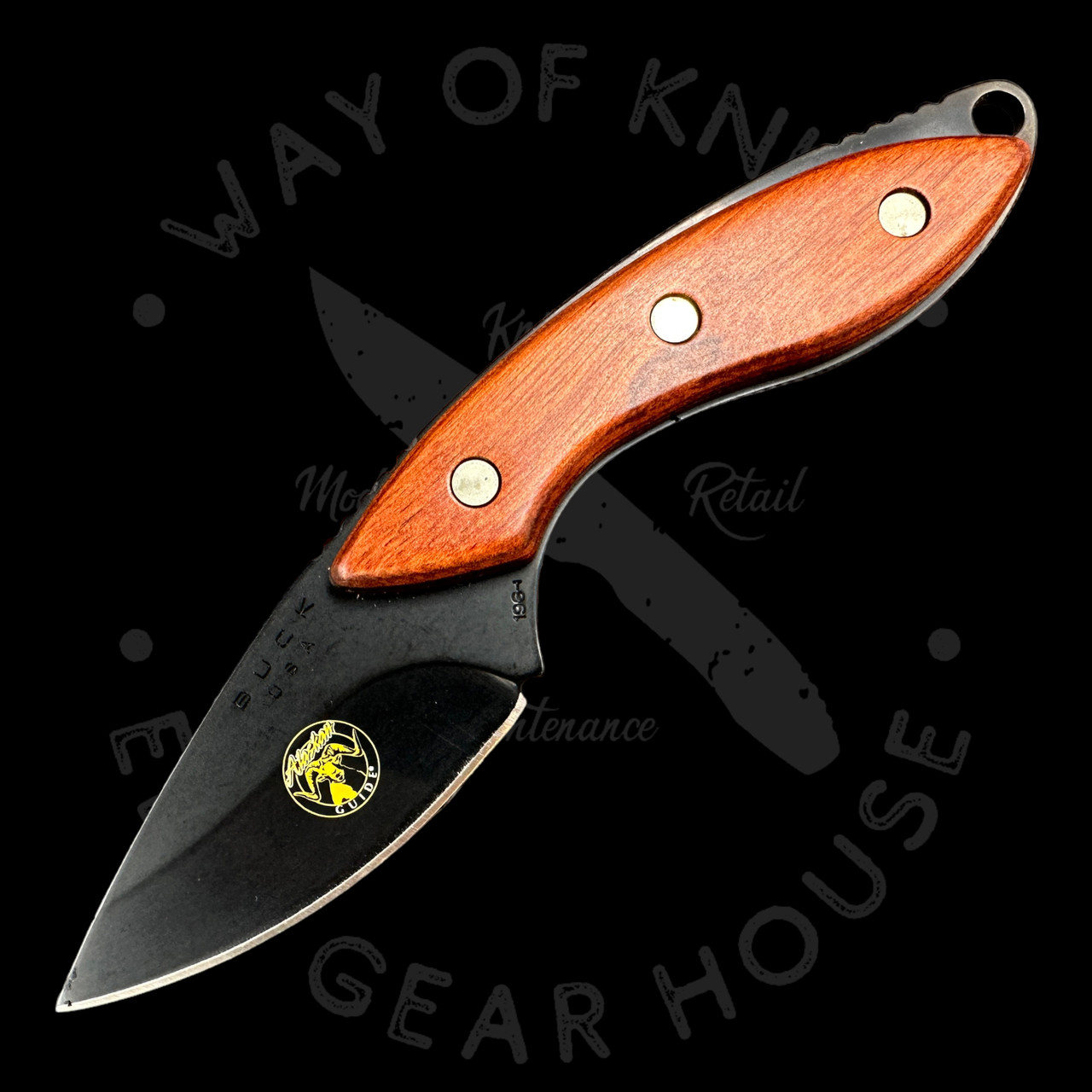Unknown Facts About Alaskan Ulu Knives
Table of ContentsThe smart Trick of Alaskan Ulu Knives That Nobody is DiscussingThe Buzz on Alaskan Ulu KnivesSome Ideas on Bmerry Studio You Need To KnowGetting The Bmerry Studio Ulu Knives To Work
I will certainly presume that the size as well as angles will be playing to the toughness of each of the grinds. forms that contour internal, like a shapely. Consider exactly how a cave contours in, or think "con-cavity". forms that contour external, like a football. the rear of a blade, reverse of the edge.
A complete hollow work goes from the side completely up to the spinal column. The Black Widow Caper visualized above is almost a full hollow grind; you can see that a little the stock on the spinal column is still left unground. The hollow work is preferred for both production as well as handmade blades.
Altering wheel dimension can be expensive for suppliers and handmade manufacturers alike, which may limit hollow ground styles to certain sizes, or sustain extra expenses to make a particular design. The hollow work is typically done on a slim blade, as well as then ground to have a slim side.
The Ultimate Guide To Bmerry Studio
If you integrate a hollow grind, a thin side, and a nice deep stomach, it will be just one of the most effective slicing blades you have ever before had. One benefit of the hollow grind is that the blade does not increase in thickness as dramatically as other grinds do. This suggests that as you hone the side, it will stay virtually as thin as when you initially obtained your knife.
The hollow grind does have a downside of training course. Considering that there is less material sustaining the side, it can chip or surrender with tough usage which make hollow grinds unfavorable in big style blades like machetes. If you require your blade to be a supreme slicer, the hollow grind will do very well.
Hollow grinds are typical on hunting as well as skinning blades therefore. Another blade that uses the hollow grind is the straight razor. The very slim edge you can attain with a hollow work permits simple press cutting with the straight razor.: Amazing slicing ability, simple to hone, much easier to make (can be subjective).
The complete level work is as it appears - the work goes all the way down from the spinal column to the edge bevel in a level, linear slope. The level grind is one of the most functional grinds.
Our Alaskan Ulu Knives Statements
A lot of flat grinds are a balance between the two, though it will certainly depend on the style. The complete level grind is thickest at the back for stamina, but tapers down into a relatively slim edge for superb slicing.
The level grind's main bevel inclines linearly and also slowly. This enables the full flat work to go through products with more ease than various other grinds that incline non-linearly (hollow), or at steeper angles (sabre). This is why most of kitchen area knives are flat ground - so they can travel through BMerry Studio food quickly without much resistance.
If someone states "sabre hollow ground" you understand the blade has a hollow work that starts partway down the blade. The change line between the main bevel as well as the unground portion of the blade is described as the Sabre Line. The sabre grind is used when the maker desires a more powerful blade.
The sculpt grind is not ground on one side at all. It is totally level on one side, as well as has the key bevel only on one side. BMerry Studio. The sculpt work may or might not have a secondary side bevel. The knife pictured above, as well as the profile representation picture to the left, are both sabre sculpt grinds.
About Bmerry Studio Ulu Knives
A complete chisel grind would have the bevel go all the method approximately the back (BMerry Studio). The carve work is easy to make, as you only need to grind one side, and also you don't have to make the work symmetrical with the various other side. The carve grind is likewise very easy to develop for the exact same factor - there's just one side to sharpen (and after that strop off the burr).

The low sabre work produces an obtuse key bevel angle, integrated with a carve work, produces an extremely thick and sturdy edge.: Superb stamina, good cutting (depending on angle), simple to hone, can have wonderful reducing capacity (once more - angle).: Occasionally located in choppers such as machetes or various other bushcraft blades.